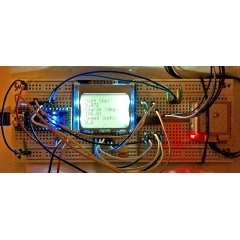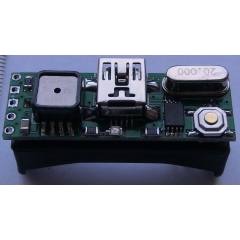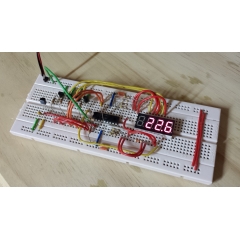Categories
- animatronics (12)
- apple (11)
- arduino (179)
- art (41)
- articles (121)
- artificial intelligence (11)
- automation (421)
- avr (205)
- bitcoin (3)
- breadboard (9)
- cameras (57)
- cars (26)
- cell phones (28)
- clothing mods (21)
- console mods (26)
- dangerous (94)
- desktop mods (24)
- embedded (5)
- flying things (54)
- fpga (22)
- gaming creations (108)
- interface (225)
- internet (17)
- laptop mods (6)
- lasers (22)
- linux (7)
- magnetic (3)
- medical (12)
- microcontrollers (51)
- misc projects (152)
- msp (12)
- music (124)
- pic (90)
- projects (23)
- pyroedu (76)
- raspberry pi (26)
- robots (312)
- security (36)
- sensors (307)
- software (200)
- solar (19)
- stamp (9)
- tools (149)
- tutorials (98)
- Uncategorized (45)
- usb (44)
- wireless (256)
Sponsors


Posted January 15, 2020 by Chris
“I’ve been working on creating a cheap, time-lapse camera that people could use to ‘sense’ the world around them. The cost of such a device would be around $10, when all is said and done, and having multiple of these devices would open up options for public computing that people have not considered – a world where people are willing to deploy “personal, public” electronics throughout their environment with the same ubiquity, recyclability and reusability as paper.”

Posted January 6, 2020 by Chris
“The temperature and relative humidity of indoor air is an important parameter that can influence indoor microbial survival, abundance, and community structure. Temperature and relative humidity can also be used to infer other information about indoor environments, such as whether or not it is being heated or cooled.”

Posted December 27, 2019 by Chris
“It’s quite a common problem when building electronics that some components need cooling which is usually done through some sort of heatsink and optional fans. Choosing the right cooling solution can be a difficult task because the real life behavior of the system is hard to predict or model. In my case I have faced the simple question quite a few times: how much heat can a cooling system dissipate?”

Posted December 21, 2019 by Chris
“This is a project I started about a week or so ago and have been working on when I find time after work. It’s a GPS and compass that temporarily uses an Arduino Nano micro-controller, Nokia 3310 screen, EM-406A SiRF III GPS receiver, and a simple (non-tilt compensated) magnetometer for compass heading.”

Posted May 11, 2018 by Chris
"…I had a vision of a different kind of vehicle for that year. What I wanted to make was a self balancing extension ladder. You could ride it around the desert while standing on a rung, and then when the dust storms kick up, you hit a button and whuup!, the ladder extends and lifts you right above the low-flying dust clouds. Sounds fun? I thought so."

Posted February 4, 2018 by Chris
"This post will be divided down into two main sections: hardware and software. I will try to explain with detail while keeping it short, and cover some of the key elements and choices involved in making this project."

Posted August 22, 2017 by Chris
"I found on Ebay very nice, small 12v 23A battery holders for PCB mounting style and decided to fit the SMALL DIGITAL BAROMETRIC ALTIMETER just on the back of the holder. So basically this is the same schematic as the SMALL DIGITAL BAROMETRIC ALTIMETER, however I moved some of the connections to different MCU pins because of PCB space limitations."

Posted August 7, 2017 by Chris
"Wally is a wall following robot that uses ultrasonic (ping) sensors to detect objects in its path, much like a bat uses SONAR to “see” things around it. Ultrasonic sensors are like high-frequency microphone/speakers."

Posted August 4, 2017 by Chris
"Monitoring and controlling relative humidity is important for humans health. Too low or too high humidity feels uncomfortable, but most importantly high moisture is a factor for growing mold in your home, which could be health threatening. I will not go into details on how to control humidity. Instead I’ll describe what motivated me to design and create my own temperature and humidity sensor which reports its readings every minute to a central Linux server."

Posted July 29, 2017 by Chris
"This circuit is simply a digital thermometer. I use a Microchip PIC Microcontroller to communicate to a Dallas DS18B20 Digital Temperature Sensor, interpret the data, and display the temperature on a multi 7 segment LED display."






